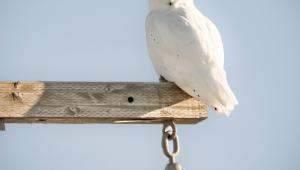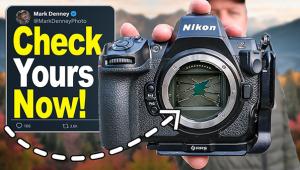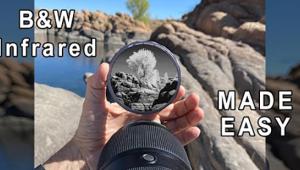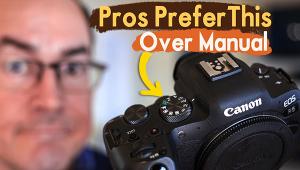Covering The Photo Beat; Tripods And Camera Supports
You might think that there is not much scope for innovation in camera tripods.
You would be right. After all, the number of legs is fixed (though there are
monopods, and there have even been a couple of bipods) and their sole function
is to hold a camera on top (though again, some make provision for hanging it
underneath). But the truth is that tripods are like James Bond movies. You know
exactly what is going to happen--does anyone really think that the baddie
is going to blow up the world?--but the interest lies in how well the whole
thing is executed.
Besides, there are actually trends in tripod design. I spotted no fewer than
four at the recent PMA show. The first is that tripods are getting both bigger
and smaller. The second is that monopods are growing feet (I am not joking).
The third is that carbon fiber is becoming more and more common. The fourth
is increasing provision of some form of insulation to stop your hand from freezing
to a cold tripod.
 |
 |
||
|
|
Bigger--and smaller?
Yes. Of course there have always been very small tripods, including tabletop,
but now there are a lot more. My own belief is that many manufacturers are being
rather optimistic in hoping that digicam users will stick their cameras on tripods
in order to get better pictures, but many seem to believe that this is a gamble
worth taking. Also, to be cynical, many mini-tripods are so cute (and so inexpensive)
that people will buy them on impulse, even if they never use them. And besides,
there are all kinds of "value added" at this end of the market.
I had three favorites. In the order in which I saw them, they were the gorillapod,
with its cleverly articulated legs so it could wrap around things; the cigar-shaped
OS 60 tripod from OSN with spring-loaded legs and a built-in (but detachable)
LED flashlight; and a matching tripod and clamshell case from Sakar, the SP5.
Both the gorillapod and the OS 60 are easier to illustrate than to describe.
As for bigger, there have always been big tripods, too: 10 ft (3 meters) tall,
and above. The great majority of tripods, though, have needed their center columns
to be at or near full extension to go much above 5 ft 7" (1.7 meters).
I have long believed that center columns are a snare and a delusion, because
they make really good pendulums. At my height (I'm about 5 ft 2")
I don't need the center column too much anyway, but if you are 6 ft tall
it's another matter. More and more manufacturers are making tripods that
operate at "eye level" for people of 6 ft (1.8 meters) or under
without the column extended.
When recently I pointed out to Gitzo that this was well above my eye level,
they got a bit embarrassed. However, if you're not as short as I am, the
increased height of "average-height" tripods such as Gitzo's
new models (in alloy and carbon fiber) or Slik's new Pro 500 AMT (Alloy
Magnesium/Titanium) is definitely a Good Thing: the Pro 500 AMT reaches 62"
(1.55 meters) without a tripod head, anything from 64-68" (1.60-1.70 meters)
with, before you raise the center column.
This isn't a question of new ranges: it's a question of new heights
in existing ranges. Another is in the Gitzo Basalt range. Basalt isn't
as light as carbon fiber, but it's lighter than light alloy or steel,
and besides it is a lot "deader." That is, it absorbs (and therefore
suppresses) vibrations a lot better. This is why I have been seriously considering
a basalt tripod for a while. The weight difference is a moral issue: I could
save the 2 or 3 lbs that a carbon-fiber tripod gives me by going on a diet.
Vibration suppression, on the other hand, is a very real practical issue. I
could go on a starvation diet and still not bring my existing tripods up to
basalt or carbon-fiber standards.
Benro, a Chinese company, also has basalt tripods. I had thought that this was
a proprietary Gitzo material, but apparently it isn't. Benro tripods appear
well made, and embrace light alloy and carbon fiber as well as basalt, so presumably
others may yet take it up, too. Like many Chinese products, they represent superb
value for the money but lack the ultimate smoothness and sophistication of top-flight
European tripods.
Tripod/Monopod?
How about monopods growing feet? Once again, this is not entirely new--my
ancient Uni-Loc has a "shovel" second leg, on which the photographer
stands to stabilize the monopod. These are basically monopods with three legs
at the bottom which, when extended, somewhat resemble the base of a wide-splayed
music stand. The one that impresses me most is the Sunpak VersiPod II. The bottom
of the monopod splits in three, in the fashion of a Victorian tripod cane: each
leg section is rounded on the outside (where it is part of the monopod when
not deployed).
 |
|
|
Carbon-Fiber Updates
There's not much more to say about carbon fiber. Gitzo has a
new way of building leg walls that is thinner but has more layers, allowing
better strength with less weight, while Benro offers two grades, 6x and 8x,
presumably referring to ply layers. Olivon's newest carbon-fiber tripod
goes up to 1.71 meters (just over 67") without the center column: another
example of the trend toward more height.
Leg Warmer Styles
As for insulators or "leg warmers," half a dozen new tripods have
some form of high-density foam around the legs to make the tripod more comfortable
to carry. They work in two ways. One is if you are carrying the tripod in your
hand. In even moderately cold weather, your hand can soon feel as if it is about
to drop off from the cold, while in really cold weather there can be genuine
medical risks if you are not wearing good gloves. The other is if you carry
your tripod over your shoulder, extended, maybe with the camera on it. Regardless
of the weather, the leg warmer stops it biting into your shoulder quite as viciously
as bare metal legs.
On the other hand, leg warmers add weight (very little) and bulk (potentially
quite a lot) and if they are too big they can make it hard to get your hand
around the tripod, especially if you have small hands like mine. Two clever
innovations here are putting leg warmers on only two legs (several manufacturers)
and shortening them so that they extend only for an inch or two beyond your
hand when it is at the center of balance of the tripod: Sakar offers the latter,
even on their least expensive tripods, starting at under $20.
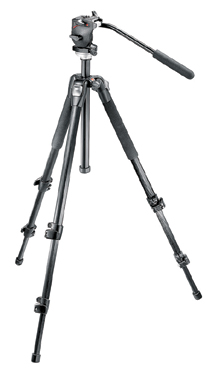 |
 |
||
|
|
Style Setters
So much for trends: what about individual features? Well, Manfrotto's
Expedition range carries the National Geographic logo and a proportion of the
price is paid to the Society, which has to be good news if you like world-class
photography, even if the writing is sometimes a little purple. The Expedition
range is based on the well-established Neotec design with the easy leg release,
and (unlike the Neotec range) they have leg warmers. Manfrotto has also introduced
some very clever polymers (plastic if you are being rude, though to say this
is to denigrate some serious technology) to make the "Safe-Lock"
discs on top of their monopods to stop the camera from slipping; I do not know
if the same materials have been used on tripod heads as well.
- Log in or register to post comments















